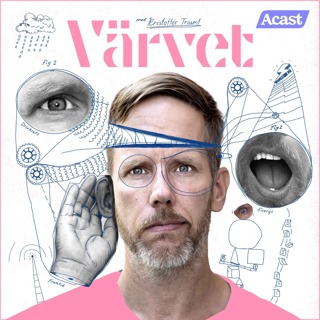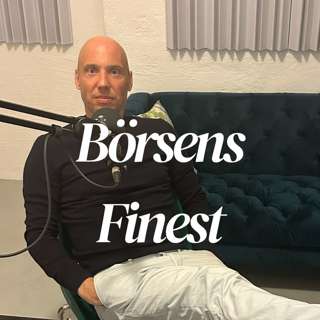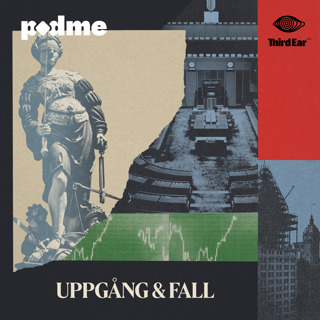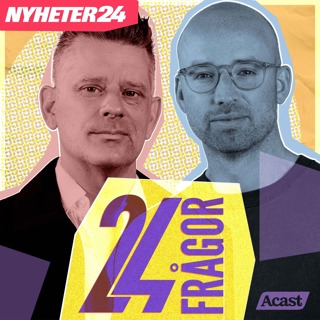
Immobile Homes
"Part of the paradox at the heart of manufactured housing," explains Esther Sullivan, a sociologist at the University of Colorado Denver "is that it's precisely the thing that makes it so affordable that also makes this a highly insecure form of housing." Sullivan says that about a third of mobile homeowners live in parks where they rent a plot of land for their home. She calls this arrangement halfway homeownership, because it’s filled with uncertainty. The property owners can raise rents, or fail to maintain communal infrastructure, or even sell the park and evict everyone living in it. Often there isn't a lot that residents can do, but now there is a new movement of cooperative ownership of mobile home parks. Immobile Homes Subscribe to SiriusXM Podcasts+ to listen to new episodes of 99% Invisible ad-free and a whole week early. Start a free trial now on Apple Podcasts or by visiting siriusxm.com/podcastsplus. Hosted by Simplecast, an AdsWizz company. See pcm.adswizz.com for information about our collection and use of personal data for advertising.
16 Maj 201828min

Breaking Bad News
When a doctor reveals a terminal diagnosis to a patient -- that process is as delicate a procedure as any surgery, with potentially serious consequences if things go wrong. If the patient doesn’t understand their prognosis, for example, they could end up making uninformed decisions about their treatment. That's why many medical schools now offer training for students on how to break bad news, bringing in actors to help them learn how to navigate this critically important and very high-stakes moment. And that’s not the only connection between acting and this particular facet of medicine. It turns out that one of the first doctors to recognize the challenges of this particular kind of doctor-patient communication wasn’t just a physician -- he was also a comedian. And he drew on that experience to transform the way that doctors break bad news. Breaking Bad News Subscribe to SiriusXM Podcasts+ to listen to new episodes of 99% Invisible ad-free and a whole week early. Start a free trial now on Apple Podcasts or by visiting siriusxm.com/podcastsplus. Hosted by Simplecast, an AdsWizz company. See pcm.adswizz.com for information about our collection and use of personal data for advertising.
9 Maj 201839min

The Laff Box
For nearly five decades, the laugh track was ubiquitous on television sitcoms, but in the early 2000s, it began to disappear. What happened? How did we get from the raucous canned laughter of the Beverly Hillbillies to the silent, sly “joke every 20 seconds” of 30 Rock? The curious story of the laugh track starts with one man who created the laugh track as a homemade piece of technology that took over the sound of television and then fell out of fashion with the rise of a more modern sense of humor. What happened to the laugh track is one of the cultural mysteries that are being explored on Slate’s new monthly podcast: Decoder Ring with Willa Paskin The Laff Box Plus, Roman talks to The West Wing Weekly co-host Joshua Malina about his time acting on Sports Night, which was a turning point in the history of the television laugh track. Learn more and subscribe to Decoder Ring Subscribe to The West Wing Weekly Subscribe to SiriusXM Podcasts+ to listen to new episodes of 99% Invisible ad-free and a whole week early. Start a free trial now on Apple Podcasts or by visiting siriusxm.com/podcastsplus. Hosted by Simplecast, an AdsWizz company. See pcm.adswizz.com for information about our collection and use of personal data for advertising.
1 Maj 201839min

Gander International Airport
The Gander Airport in Newfoundland was once the easternmost airfield in North America, so when transatlantic air travel was new and difficult through the mid-20th century, Gander played a critical role in getting people back and forth from Europe to America. This made the tiny town of Gander an unlikely international hub, hosting the likes of Fidel Castro, Marilyn Monroe, Frank Sinatra, and the Queen of England in the beautiful, mid-century modern lounge. The lounge and bar at the airport also served as the town’s major hotspot, so the locals just hung out there, always with the possibility they’d rub elbows with a huge international celebrity. Once airplanes could easily make it across the Atlantic without refueling in Gander, the airport got really quiet, but the town that hosted the most famous people in the world found a new purpose on 9/11 when they welcomed 7000 stranded passengers unable to enter US airspace. Gander International Airport Subscribe to SiriusXM Podcasts+ to listen to new episodes of 99% Invisible ad-free and a whole week early. Start a free trial now on Apple Podcasts or by visiting siriusxm.com/podcastsplus. Hosted by Simplecast, an AdsWizz company. See pcm.adswizz.com for information about our collection and use of personal data for advertising.
25 Apr 201825min

The Hair Chart
Andre Walker became famous for being Oprah Winfrey’s hair stylist, but he is also known for something else: a system that he created back in the 1990s to market his line of hair care products. The system categorizes natural hair types, and it's often referred to simply as "the hair chart." The chart identifies four hair types and within each of those categories there are different sub-types. The chart spans straight, wavy, curly, and kinky hair. For Walker, the chart was all about selling his products. People could use it to identify their hair type and then buy a complementary product. But the chart has gone way beyond his own hair care line and become a way some African-American people talk and think about hair. Not everyone thinks the categories are helpful, and some of the criticism has its roots far back in American history. The Hair Chart This episode is a collaboration with The Stoop, a podcast hosted by Leila Day and Hana Baba, which features stories from across the black diaspora. Subscribe to SiriusXM Podcasts+ to listen to new episodes of 99% Invisible ad-free and a whole week early. Start a free trial now on Apple Podcasts or by visiting siriusxm.com/podcastsplus. Hosted by Simplecast, an AdsWizz company. See pcm.adswizz.com for information about our collection and use of personal data for advertising.
17 Apr 201823min

Lessons from Las Vegas
To this day, architects tend to turn their noses up at Las Vegas, or simply dismiss it as irrelevant to serious design theory. But as Denise Scott Brown discovered in the mid-1960s, there is so much to learn from Las Vegas about how to make architecture that speaks to people and not just to architects. Lessons from Las Vegas Subscribe to SiriusXM Podcasts+ to listen to new episodes of 99% Invisible ad-free and a whole week early. Start a free trial now on Apple Podcasts or by visiting siriusxm.com/podcastsplus. Hosted by Simplecast, an AdsWizz company. See pcm.adswizz.com for information about our collection and use of personal data for advertising.
10 Apr 201833min

Making it Rain
The battlefield has always been at the mercy of the climate, but there was a time in U.S. military history when we did more than just pray for advantageous weather. We tried to create it. Making it Rain Subscribe to SiriusXM Podcasts+ to listen to new episodes of 99% Invisible ad-free and a whole week early. Start a free trial now on Apple Podcasts or by visiting siriusxm.com/podcastsplus. Hosted by Simplecast, an AdsWizz company. See pcm.adswizz.com for information about our collection and use of personal data for advertising.
3 Apr 201828min

Airships and the Future that Never Was
They are hulking, but graceful -- human-made whales that float in the air. For over a century, lighter-than-air vehicles have captured the public imagination, playing a recurring role in our dreams of alternate realities and futures that might have been. In these visions, cargo and passengers traverse the globe in smoothly gliding aircraft, then dock elegantly at the mooring towers on top of Art Deco skyscrapers. Today, blimps are mostly just PR gimmicks, but for 100 years, lighter-than-air crafts were seriously considered as the perfect design solution for all kinds of problems, at least in theory. And despite setbacks and failures, people just wouldn’t give up on the promise of airships. The most promising (and most opulent) rigid airship of the 1920s era was Britain’s R101 (the R stands for rigid) and its rise and dramatic fall is the primary subject of engineering expert Bill Hammack’s new book about Britain’s last great airship, called Fatal Flight. Airships and the Future that Never Was Subscribe to SiriusXM Podcasts+ to listen to new episodes of 99% Invisible ad-free and a whole week early. Start a free trial now on Apple Podcasts or by visiting siriusxm.com/podcastsplus. Hosted by Simplecast, an AdsWizz company. See pcm.adswizz.com for information about our collection and use of personal data for advertising.
27 Mars 201819min





















